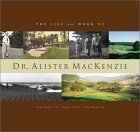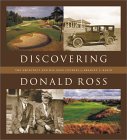The 2001 holiday gift golf book selections
December 14, 2001
It’s time once again for holiday gift book buying. Here are this year’s selections.
Foursome the Spider (Sleeping Bear, $15.95 SRP) is a rarity—a golf book written for small children.
In this cute, well-illustrated story, a spider with argyle markings is taken from his home on a golf course to a nature center.
He continues to play golf, and eventually involves all the other insects into first watching and then taking up the game themselves.
When the publishers sent this book to me, my first reaction was that golfing grandparents would buy this book to entertain their grandchildren when they visited.
Michael Glenn Monroe, the illustrator, carried forward this intergenerational connection by dedicating the book to his grandfather, who taught him the game.
Geoff Shackelford returns to the coffee table golf book market with The Art of Golf Design (Sleeping Bear, $65 SRP). Shackeford specializes in writing about golf course architecture. His work also has the benefit of being well written.
The essays call for the continuation of time-honored principles intended to produce naturalness, variety, and strategy in golf course design. Over 50 fine art renderings by Illustrator Michael Miller help prove Shackelford’s points.
Shackelford is not the type of critic who contends that nothing good was ever done since the 1920s. He’s pleased to note and describe the contributions of brilliant new courses such as Sand Hills in Nebraska, the handiwork of Ben Crenshaw and Bill Coore. He also knows how the limits of golf course finance can affect good design, but argues convincingly that paying attention to artistry will yield appropriate dividends.
Dr. Alister MacKenzie is among golf’s most revered architects of the Golden Age, yet parts of his life remain a mystery.
The Life and Work of Dr. Alister MacKenzie (Sleeping Bear, SRP $65), by Tom Doak, James S. Scott, and Raymund M. Haddock, should clear up some of the confusion.
According to this well-researched biography, MacKenzie frequently reminded potential clients and others of his medical training, but his actual medical experience was surely nothing more than middling. While in America, MacKenzie acted like a classic Scotsman, but he was born in England.
Unlike many golf architects, he was by no means an accomplished golfer. MacKenzie knew his way around a putting green, however. Therefore, like many other architects, MacKenzie’s designs tended to favor his area of playing expertise.
The book includes an extensive collection of old photographs and drawings, full-color pictures of famous holes, and fascinating reproductions of MacKenzie’s correspondence.
The Scrapbook of Old Tom Morris (Sleeping Bear, $45), will stun readers interested in both historical research and golf.
David Joy performed a one-man show in 1990 on the life of Old Tom Morris. He used a scrapbook prop, in similar fashion as he imagined Morris would have used in recalling his many decades of golf at St. Andrews and elsewhere.
In preparing for the show, Joy contacted Peter Crabtree, a collector who had obtained a 29-sheet collection of Morris’s own newspaper clippings.
Based on that treasure trove and other materials, Joy decided to build a more complete scrapbook, including artwork, photographs, Morris’ clips, and a host of other primary sources.
It’s a remarkable achievement, similar to a well-researched museum retrospective on Morris’ life and times.
Finally, take a look at Bradley S. Klein’s Discovering Donald Ross: The Architect and His Golf Courses (Sleeping Bear, $85).
Despite its outsized dimensions, this is not a coffee table book, in the traditional sense of a book long on pictures and short on text.
This book is an extensive study of one of golf’s most prolific course designers. Using a wide range of original source material, combined with up-to-date aerial photography and other useful data, Klein set out to “place Ross’s life in the context of his own evolving design work.”
In addition, Klein shows how the intervention of club committees, insufficiently appreciative greens keepers, and others altered Ross’s original concepts, and usually not for the better.
For fans of golf architecture in general and Donald Ross in particular, Klein has performed a valuable service.






